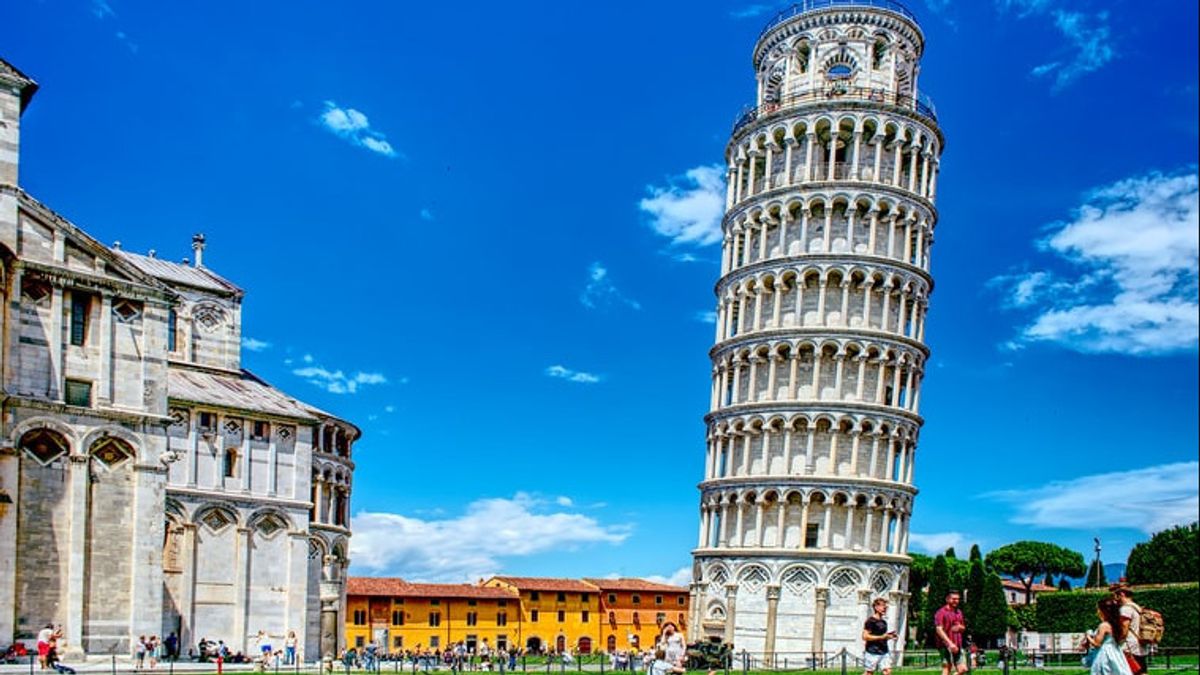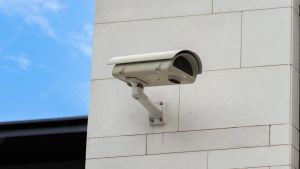JAKARTA - On August 9, the 11th century, the history of the construction of the Tower of Pisa began. Five years later, it was realized that there was a slope of the building. The Tower of Pisa is 56 meters high and took 200 years to build.
Quoting Britannica, the development process took so long due to slow progress. The project took place in the midst of the incessant war surrounding it and the war time took up to several decades. This tower was finally completed in 1372. But after construction, it was realized that there was something strange about the tower.
The tilt of the Tower of Pisa was noticed when a worker was on duty building the second floor. The slope is caused by a shallow foundation as high as 3 meters and an unstable subsoil. The cathedral and baptistery around the Tower of Pisa also look increasingly tilted. However, this slope is the main attraction for the Tower of Pisa.
Giovanni di Simone, the architect in charge when construction of the Tower of Pisa continued, attempted to compensate for the slope by making the new floor slightly higher on the short side, but the decision was wrong. The additional stone actually causes the structure of the Tower of Pisa to sink even further. Attempts to reduce slope were interrupted by various interruptions, as engineers searched for solutions to the slope problem.

Inside the Tower of Pisa are twin spiral staircases lined up, with 294 steps leading from the ground to the bell room, one staircase combining two additional steps to compensate for the tower's slope. Seven bell towers were installed; the largest weighed over 3,600 kg. However, in the early 20th century, the heavier bells had to be removed as it was believed that the movement of the bells could potentially exacerbate the tower's tilt.
The foundations of the Tower of Pisa were then reinforced by injection of cement grout and various types of bracing and reinforcement. In the late 20th century, the slope continued at a rate of 1.2 mm per year and was in danger of collapse.
In 1990, 1 million people visited the tower, climbed the hundreds of weathered steps to the top and gazed at the verdant Campo dei Miracoli outside. Fearing that the tower would collapse, Italian authorities appointed a group of 14 archaeologists, architects and earth experts to figure out how to partially remove the famous slope. The Tower of Pisa was closed for 11 years for repairs.
Long live PisaIn 1994, the Tower of Pisa nearly collapsed during repairs. The architects were finally able to reduce the slope by removing soil from under the foundation. When the tower reopened on December 15, 2001, engineers estimated it would take 300 years to return to its 1990 position. Although the entrance to the tower is now limited, hordes of tourists can still congregate outside the tower, in classic poses like standing next to a pretend tower. hold it.

Work on erecting the Tower of Pisa continued without further excavation, until in May 2008 sensors indicated that the tower's tilt had finally slowed. The architects expect the tower to remain stable for at least 200 years.
In 2003, the Italian Government organized an international committee, including experts in art, restoration and structural and geotechnical engineering to help stabilize the monument. A study explains that the restoration was carried out by removing a small amount of soil from under the north side of the tower's foundation. It is the least invasive technique and is claimed to reduce the slope from about 38 cm to 33 cm.
In 2018, experts revealed that the tilt of the Tower of Pisa continued to slow down. The Surveillance Group, which monitors restoration work on the Tower of Pisa, said the tower was "steady and slowly decreasing in slope." "It is as if his age has been reduced by two centuries," said Professor Salvatore Settis, citing the BBC.
Nunziante Squeglia, a geotechnical professor at the University of Pisa who worked with the surveillance team, added: "The most important thing is the stability of the bell tower, which is better than expected."
*Read other information about TODAY's HISTORY or read other interesting articles from Putri Ainur Islam.
Other MEMORIESThe English, Chinese, Japanese, Arabic, and French versions are automatically generated by the AI. So there may still be inaccuracies in translating, please always see Indonesian as our main language. (system supported by DigitalSiber.id)









